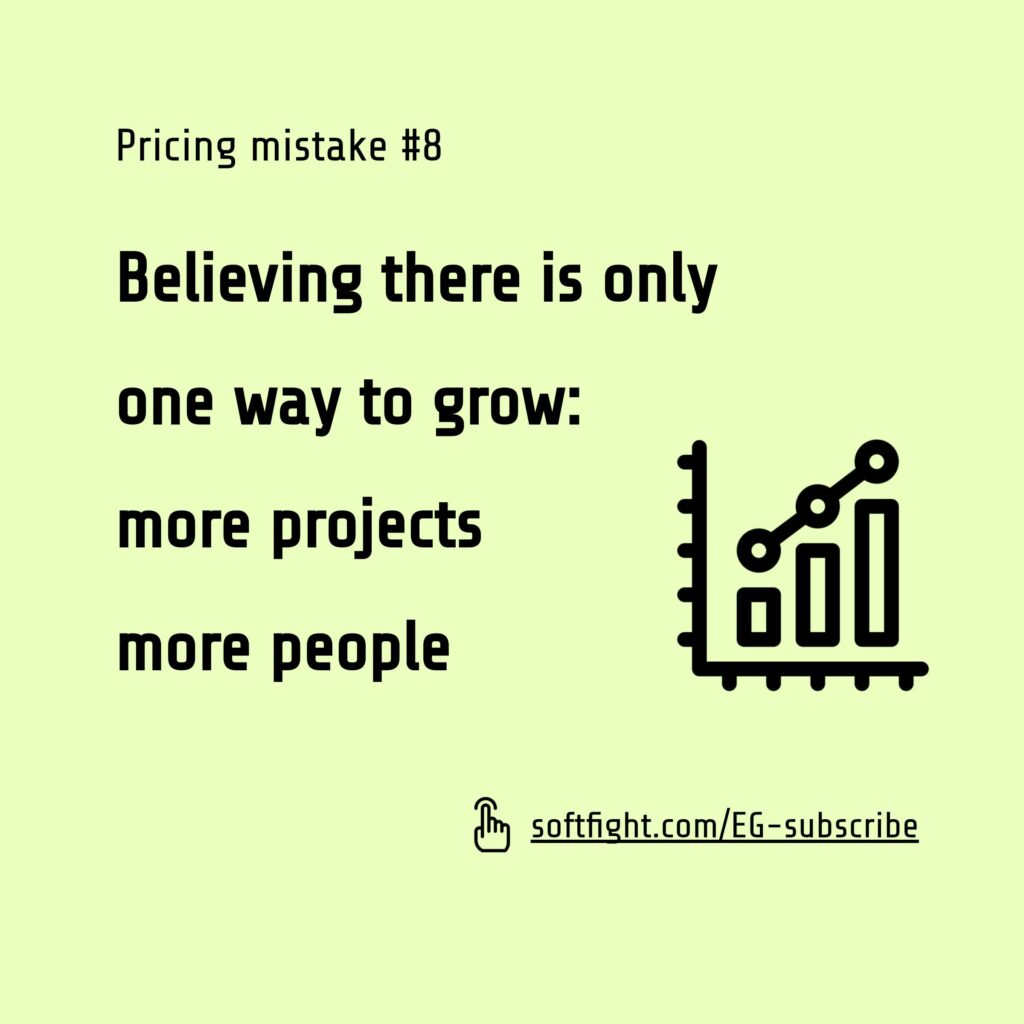This is why you need a GPS for your software business.
A few days ago we stopped at a traffic light.
The driver in the car next to us was using the Waze app, with the phone mounted on the dashboard.
A short conversation followed:
- What is the app on that phone? (my younger son, who is used to Google Maps)
- He is using the GPS because he doesn’t know where he is going.
- Maybe he knows where he’s going, but doesn’t know how to get there. (my daughter)
That is an accurate description for the vast majority of software services companies.
They know where they’re going, but don’t know how to get there.
Growing revenues
All owners and managers of software agencies know where they want to go: make more money, increase revenues.
How many of them use the equivalent of a GPS?
Very, very few, if any.
Why?
Because they believe they don’t need one.
The way to get there is very simple and clear, isn’t it?
To increase revenues you just need more projects and more employees.
Or more employees and more projects, depending on whether you have people on the bench or not.

I’ve seen this so many times, it even made it on our list of 17 pricing mistakes that could sink software services companies.
Multiple paths
If what you want is to grow revenues, there are multiple paths that take you there.
Here they are in a simplified format:
Goal: increase revenues
- Grow new sales
- Increase sales volume
- Increase pipeline per sales rep.
- Improve win percentage on project proposals made
- Hire more salespeople
- Raise pricing for services offered to new customers
- Launch new types of services to sell
- Sell to customers on new markets
- Sell by using new go to market channels
- Increase sales volume
- Increase revenues from existing customers
- Increase rates for contracts renewals
- Renegotiate contracts at higher rates
- Sell more capacity to existing customers
- Sell extra services to existing customers
Multiple destinations
You can also ask yourself if “growing revenues” is the only possible destination for your company.
These are a few alternatives that I’ve personally encountered in pricing optimisation projects I did in the past 2 years:
> Grow profits
> Prepare the company to sell it
> Pivot to another business model: eg. venture studio.
There is also the not so pleasant destination called “survival”.
2023 might prove to be an exceptionally difficult year for software companies.
Many will be content to keep revenues flat.
If your goal this year is not growth and you are happy just to make the same revenues as last year, everything I wrote above still applies.
You just have to change the baseline.
Instead of using last year’s revenue as the starting point for growth, use signed contracts.
Make a simple forecast, starting with all of your existing customers, and calculate the total value of signed contracts for projects to be delivered by the end of the year.
Subtract the ones at risk:
- Are there clients in danger of not being able to pay you on time?
- Which projects might be canceled?
Add existing pipeline value multiplied by the probability that it will happen.
Take into account starting times for new projects (they might take longer than anticipated and you might not book too much of those revenues this year).
Compare this with your target.
If it’s below what you need, look at the paths to grow revenues from above and find ways to fill the gap.
The useful GPS
A good GPS app will show you:
- All possible destinations
- Exact address for each of them
- What options you have to get there (car, walk, public transport, biking, flying, boat, etc.)
- How long it might take to get there for each of them, for different moments (now, in the future, at a specific time depending on traffic)
- Once you pick a destination and a mode of transportation
- Several alternative routes
- Real-time traffic information
- The estimated time of arrival (ETA)
- When you are on the way
- It updates the ETA in real-time
- It notifies you if something changes in the relevant environment (traffic jam, accidents, etc.)
- If applicable, it shows you alternative routes and the impact on the ETA
I’m convinced some of you have developed software for mapping applications and you could add to this list other useful features.
Now replace:
- Destination on the map with business objectives
- Exact address with definitions of customer segments
- Modes of transport with services, skills and quality levels you offer
- Alternative routes with strategies and go to market channels
- Traffic jam, accidents, with competition, inflation, economic crisis
- ETA with your revenue targets for this quarter or year.
Do you have a trusted GPS for your business?
WHAT THIS MEANS FOR YOU
“If you don’t know where you are going, any path will take you there.”
This is an often cited but not quite accurate quote.
It is based on this excerpt from Lewis Carroll’s classic children’s tale, Alice in Wonderland:
a disoriented Alice: Would you tell me, please, which way I ought to go from here?
the mysterious Cheshire Cat: That depends a good deal on where you want to get to.
A: I don’t much care where …
C: Then it doesn’t matter which way you go …
A: … so long as I get SOMEWHERE.C: Oh, you’re sure to do that, if you only walk long enough.

